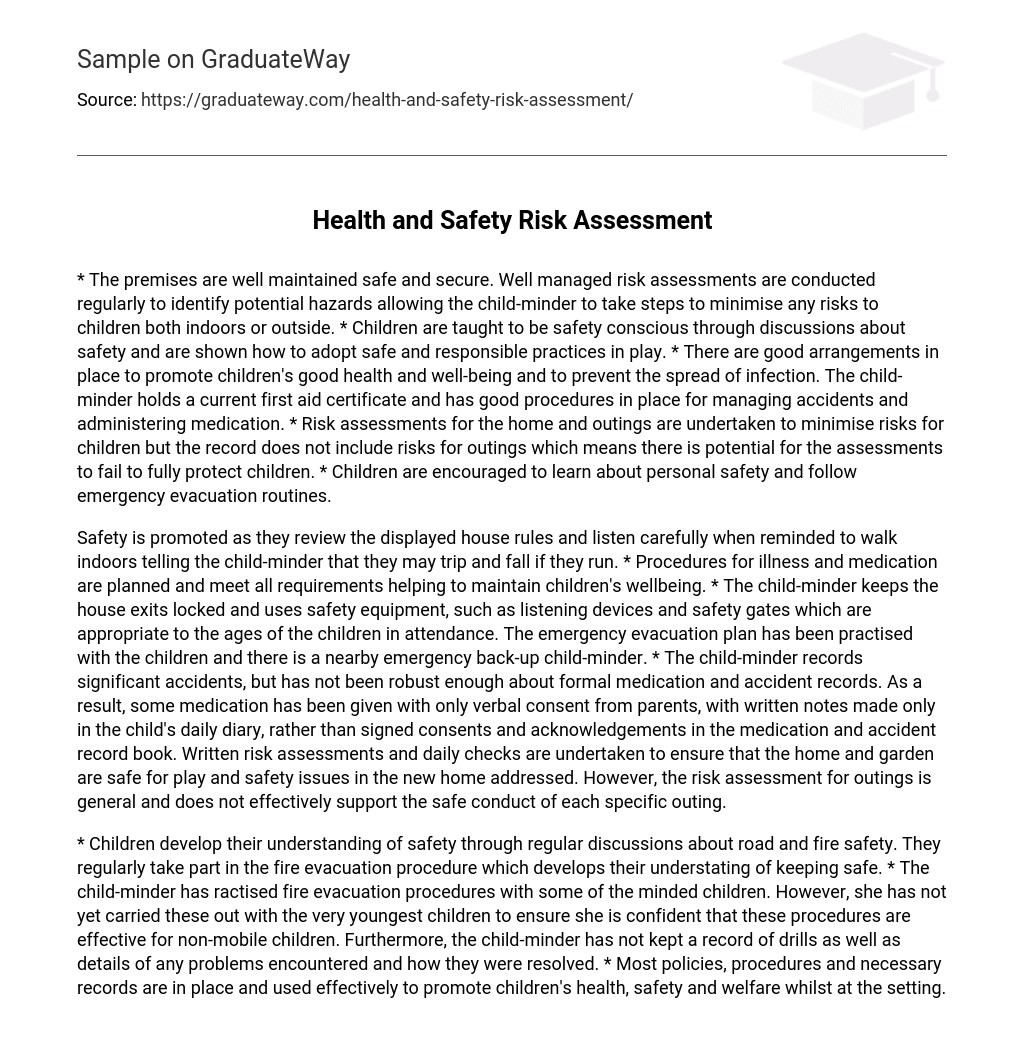The premises are well maintained, safe, and secure. Regular risk assessments are conducted to identify potential hazards and minimize risks to children both indoors and outdoors. Children are taught about safety and encouraged to adopt safe practices during play. Measures are in place to promote children’s health, prevent infection spread, manage accidents, and administer medication effectively. Risk assessments are conducted for the home and outings to minimize risks, although the records do not include risks for outings which may compromise children’s full protection. Additionally, children are guided on personal safety and emergency evacuation routines.
The child-minder prioritizes safety by reviewing house rules and reminding children to walk indoors to prevent accidents. They also ensure that procedures for illness and medication meet all requirements for the wellbeing of the children. Safety measures such as locking house exits, using appropriate safety equipment, and practicing emergency evacuation plans are in place. Additionally, there is a nearby emergency backup child-minder available. Accidents are recorded, but the child-minder needs to improve the formal documentation of medication and accidents. Verbal consent from parents is sometimes relied upon for medication, with written notes existing only in the child’s daily diary instead of a dedicated record book with signed consent and acknowledgement. Risk assessments and daily checks are conducted to ensure the safety of the home and garden for play, but outings have a general risk assessment that does not adequately support each specific outing’s safe conduct.
Children learn about safety through regular discussions on road and fire safety and by participating in fire evacuation procedures. The child-minder has practiced fire evacuation procedures with some of the children in her care, but she has not done so with the youngest children to ensure that these procedures are suitable for non-mobile children. Additionally, the child-minder has not kept a record of drills or documented any issues that have arisen and how they were resolved. Nevertheless, most policies, procedures, and necessary records are in place and are effectively used to promote the health, safety, and welfare of children at the setting.
However, the child-minder has not shared information with parents about her procedures in the event of a child going missing. Appropriate procedures exist for documenting accidents and any medication given to children. The child-minder is qualified in first aid, which enables her to handle minor injuries effectively. When going out with children, the child-minder carries a first aid kit, her mobile phone, and cards containing parents’ contact information in case of emergencies. The children are placed in car seats appropriate for their age when traveling by car.





